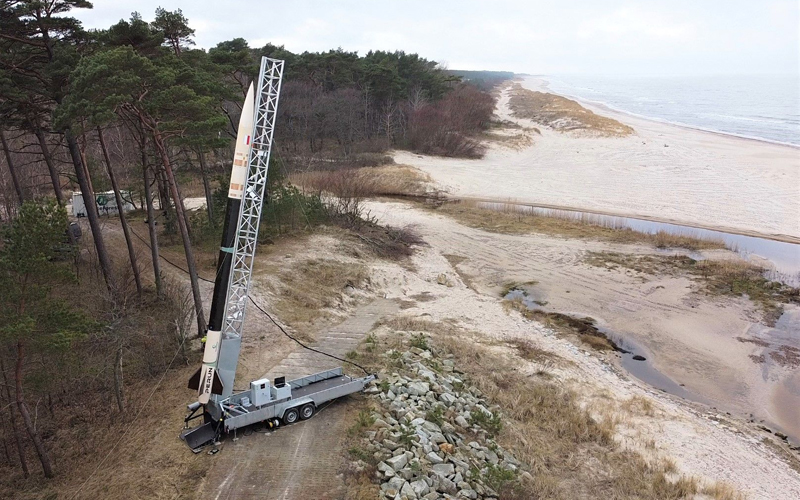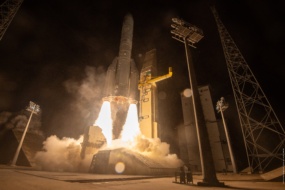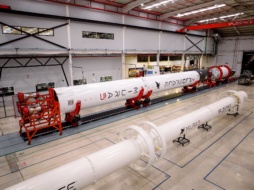The European launch industry is going through changes.
Ariane 5 is set to be retired in a few months and launch startups are racing to debut the continent’s newest vehicles. The first two months of 2023 offer a glimpse into what could very well be a bustling year for the industry.
January
French launch startup Latitude completed the first hot fire test of its Navier engine at the end of January. The engine will power the company’s two-stage Zephyr launch vehicle, which will be capable of deploying 100 kg payloads to sun-synchronous orbit (SSO) at an altitude of 700 km.
January also saw a strong start to the year for Italian in-orbit logistics company D-Orbit. The company has already launched three ION Satellite Carriers. The company also signed a new contract with Thai software company Patriot Infovention for the launch of its LOGSATS 3U CubeSat, which will be the first Thai space-based IoT communications system and an aviation monitoring system.
February
February had a less ideal start. During a panel at the SmallSat Symposium on Feb. 8, Avio CEO Giulio Ranzo explained that the results of the Vega C failure investigation were expected soon. Despite declining to go into too much detail, Ranzo did confirm that the second stage had indeed been the cause of the failure. He also floated the possibility that the original Vega vehicle would return to flight so launches could continue through 2023.

German launch startup HyImpulse and partner Adamant Composites announced on Valentine’s Day that they’d successfully completed a hydrostatic burst test of a linerless carbon fiber-reinforced polymer liquid oxygen tank…we know, it’s a mouthful.
- Although the company declined to share at what pressure the tank burst, HyImpulse did say that it passed “with flying colors.”
- The tank will be utilized aboard the company’s SL1 launch vehicle, which will be powered by hybrid rocket motors.
- SL1 will be capable of deploying 500 kg payloads to LEO. However, the company will first be looking to launch its suborbital SR75 vehicle, which is scheduled for a maiden flight next year.
French launch startup HyPrSpace announced Feb. 15 that it had partnered with French aeronautic system manufacturer EQUIP’AERO for the design and manufacture of cryogenic valves. HyPrSpace will utilize the valves to control liquid oxygen in its hybrid aerospike rocket motors. The motors will power the suborbital Baguette One launch vehicle and two orbital-class OB-1 (Orbital Baguette 1) launch vehicles, which are designed for partial reuse.
In its annual financial report published Feb. 16, Airbus revealed that its Airbus Defence and Space subsidiary saw a more than 40% drop in gross profits to €384M for 2022. The drop was attributed to Ariane 6 development delays; the loss of two Pleiades Neo satellites in December aboard that ill-fated second Vega C flight; and inflation. According to Airbus, the losses were partly offset by a higher volume of military aircraft, the ramp-up of Eurodrone, and a positive impact related to retirement obligations.
Also on Feb. 16, Spanish launch startup PLD Space announced that it had completed construction of its Miura 1 launch complex and was in the process of using an already qualified vehicle for acceptance tests. CEO Raúl Torres projects that the maiden flight of the vehicle would occur in one month. Miura 1 is a suborbital vehicle that will carry microgravity R&D payloads and serve as a demonstrator for Miura 5. The larger vehicle is designed to carry 540 kg payloads to SSO.

Remaining in Spain…on Feb. 16 (it was a busy day), launch and nanosat manufacturing startup Celestia Aerospace announced that it would build a new satellite facility in Sabadell, which is just north of Barcelona. Celestia will use the facility’s new capacity to continue developing its Space Arrow launch system. Space Arrow is designed to use a MiG-29UB to air launch 16 kg payloads to LEO. The announcement comes approximately a year after Celestia closed a whopping €100M seed round from a single investor. Here’s a deep dive into the peculiar round if you’d like to learn a little more.
Polish suborbital launch startup SpaceForest announced Feb. 21 that it had completed prelaunch testing procedures for its PERUN rocket. The tests were completed at the Air Force Training Centre in Ustka, Poland, and included preparation of the mobile launch pad, operation of the launcher, communication with the ground station, and refueling. All tests were completed successfully. PERUN is designed to be capable of launching 50 kg payloads to a max altitude of 150 km.
The upshot: With all this happening over just the first two months of the year, the next ten is shaping up to be quite formative. In addition to the maiden flight of Ariane 6 tentatively expected this year, Orbex, Skyrora, Isar Aerospace, and Rocket Factory Augsburg have all projected to debut their respective vehicles in 2023. The PLD Space Miura 1 and HyImpulse SR75 suborbital launch vehicles are also on the schedule for maiden flights this year. It’s highly unlikely that they’ll all make it to the pad in 2023, but it all does promise some excitement in our near future.




